Dissecting ‘business casual’
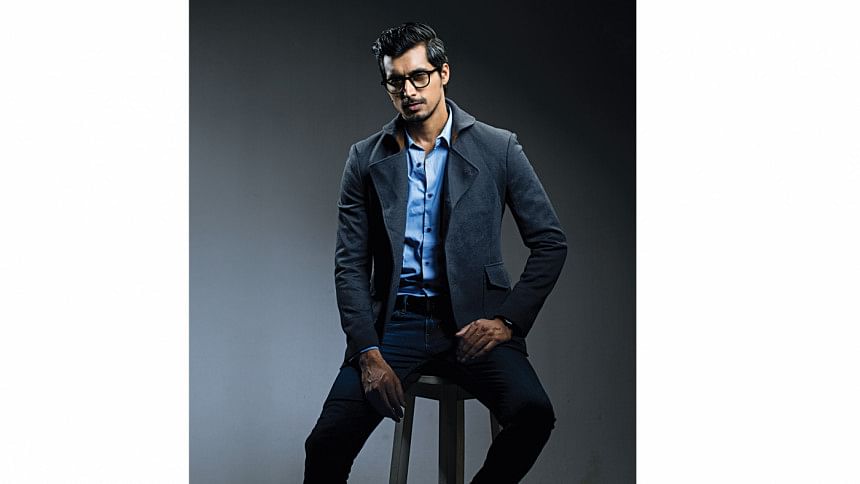
There are very few oxymorons which are as challenging to demystify as the term 'business casual.' Even though we all have vague notions of what this dress code implies, there tends to be a lack of unanimous agreement regarding its exact definition and elements. While most of us would include blazers and loafers into the dress code, lots of dispute surrounds the inclusion of dark wash denim and open-toed heels.
Filtering down to its basics
The resulting confusion stems from the spectral nature of the dress code. Even though at its base, business casual denotes dressing oneself in a sophisticated and professional, yet comfortable manner, various contextual factors modify this definition. The type of industry, the total number of employees, existing workplace culture, and the average age of employees can all affect how the dress code is actually implemented.
Thankfully, if you ignore nuances, there is still a basic guideline you can go by when figuring out your business casual wardrobe. Thinking of the dress code as a hybrid of business formal elements with casual wear can be useful. It is best to have a majority of your business casual clothing in neutral shades and to build on that with inclusions of bold colours and patterns. Business casual allows some space for experimentation when it comes to tops, as long as the pants balance it out.
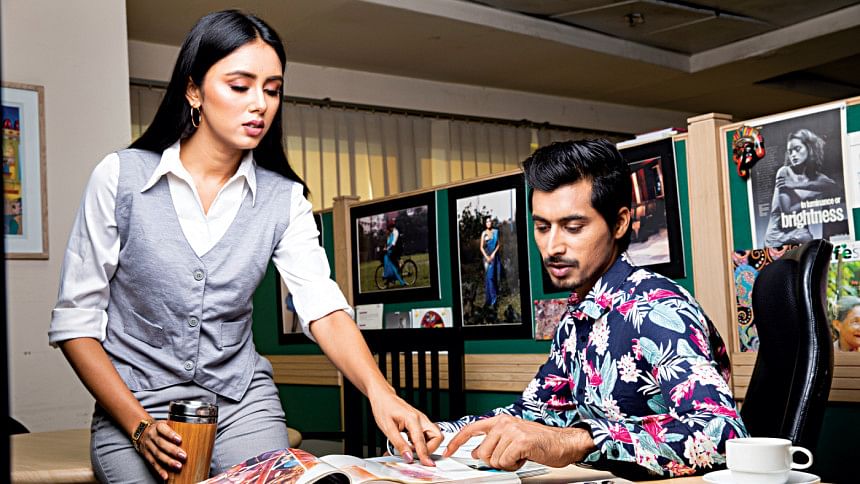
Keeping context and extremities in mind
While most modern offices have started to adopt business casual as the office dress code, there are still a few outliers. The traditional business attire or the business professional code is still the norm in industries such as finance, banking, government and law. On the other hand, creative industries usually have a laxer and laid back dress code compared to the business casual code. Even if your workplace embraces business casual on a regular basis, meetings with clients and executives may still require you to trade your office dailies with more formal combos.
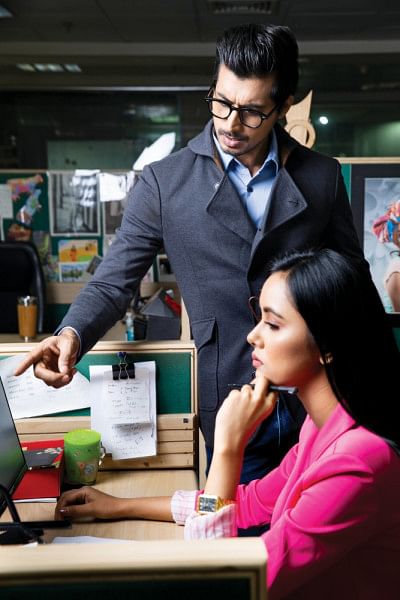
A guide for women
For women, button down shirts, keyhole blouses, and long sleeve styles are all good candidates for the dress code as long as the neckline is kept modest. Lightweight synthetic and classic cotton fabric will allow you to keep your comfort level in check while also ensuring that the texture is work appropriate. You can opt for a neutral shade if you prefer blending in, or go for soft pastel shades and bold jewel tones depending on your personal taste. Patterns should be kept subtle, making animal prints and vibrant floral prints riskier choices.
Whether it be wide legged or a slim fit, most cuts are suitable as long as they are the appropriate length and coloured in neutral shades or darker hues like burgundy or navy. Pants usually play the balancing role in women's business casual outfits, so patterned trousers should only be incorporated in your outfit if the rest of it is subdued and muted. If your workplace is a bit more casual than most, dark wash denim is a possible alternative as long as it is paired with a smart top.
Be it flats such as loafers and ballet shoes, or short heels in the form of kitten pumps or blocks, there are numerous shoes to choose from for a women's business casual outfit. As long as the heels are not too high and the shoes are not too open toed, most options fall within business casual boundaries. Embellishments such as buckles and studs should be kept minimal, although this may vary depending on specific workplace cultures.
The essentials for men
For men, although the only divide between business casual and business formal may seem like the presence of a tie or the lack thereof, the options vary more than that. Collared, long sleeved shirts are the safest option but they can be traded with shorter sleeves, Oxford button downs, or even polo shirts depending on the workplace culture. Shirts with contrasting collars are an office friendly statement piece which supplements most wardrobes well. Similar to the case with women's wear, bright colours and flashy patterns should be avoided.
Acceptable pants for men include khakis, dress slacks, and slim fits in neutral shades and darker jewel tones. If the colours feel limiting, you can experiment with texture by trying flannel, cavalry twill or corduroy to add more variety. If your workplace is more on the casual end, you may opt for denim with a dark wash as long as it is properly fitted. The outfit can be topped off with a pair of loafers, monk straps or brogues. Make sure to keep them polished and un-scuffed.

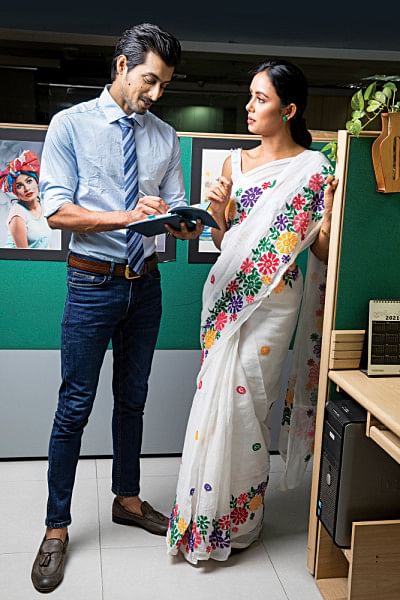
Strictly off limits
There are some elements which are universal transgressors of the business casual code, regardless of gender. These include flip flops, sneakers, loungewear, and basically anything you would wear to the gym. Overly flashy shades such as neon, and shiny textures should be avoided when it comes to articles of clothing as they can be unprofessionally loud. Un-ironed and creased clothing are also strong deviants of the category as they can make even the most professional outfits appear sloppy.
If you still find yourself in doubt with some tops and pants, remember to err on the side of professional, and you should be fine.
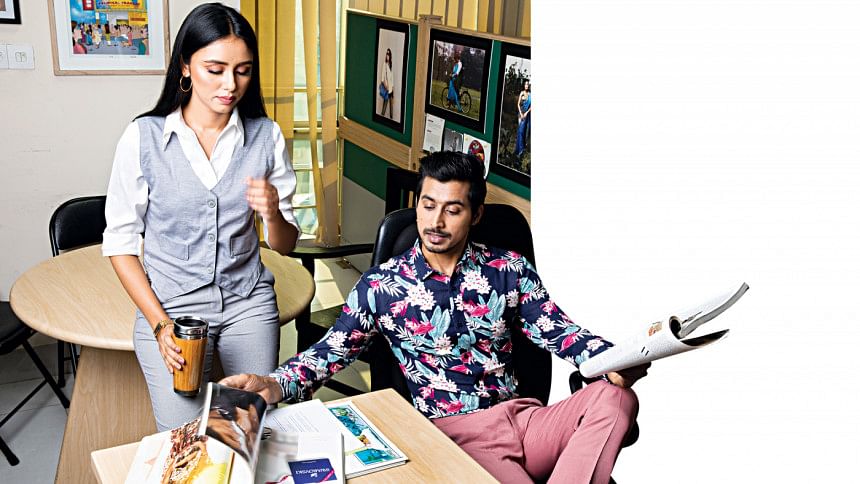
Photo: Sazzad Ibne Sayed
Model: Rabbi and Antora
Makeup: Sumon

 For all latest news, follow The Daily Star's Google News channel.
For all latest news, follow The Daily Star's Google News channel. 



Comments